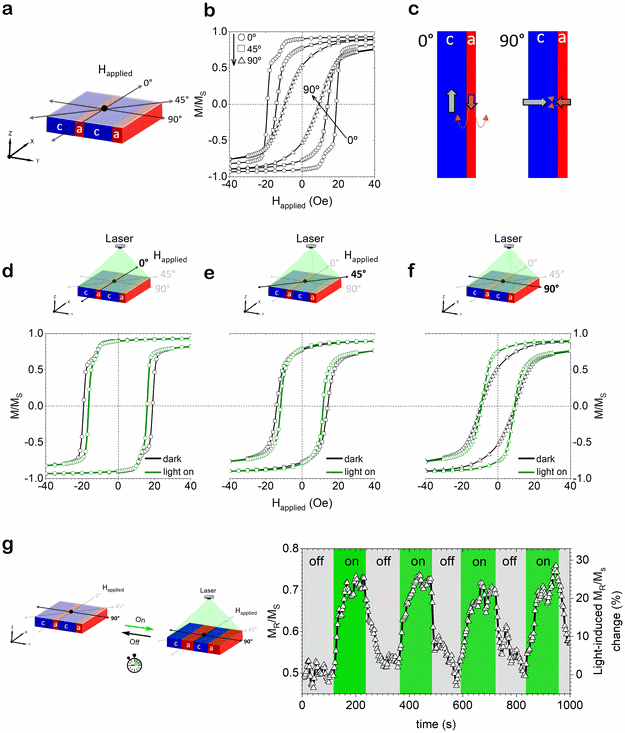Wireless control of magnetism in artificial multiferroic materials by visible light for next-generation magneto-optical devices
May 30, 2024
Researchers from the Department of Physics at Universitat Politècnica de Catalunya, together with scientists from Universitat Autònoma de Barcelona and the Instituto de Cerámica y Vidrio (CSIC), demonstrated an unprecedented reversible modulation of magnetism using low-intensity visible light in artificial multiferroic heterostructures at room temperature. Significant changes in the coercivity and squareness ratio of the hysteresis loops can be light-modulated, encouraging the development of novel low energy-consumption wireless magneto-optical devices
Light-induced control of magnetism is a promising technology for the implementation of novel magnetoelectronic devices because it is a non-contact actuation method that entails ultralow power dissipation. Unfortunately, deterministic and reversible control of magnetic properties using light has proven to be challenging and, so far, restricted to a few specific materials with still limited commercial viability. For this reason, the scientific community has turned its attention to multiferroic materials which are highly appealing owing to their magnetoelastic and magnetoelectric properties. Multiferroics allow control of magnetic properties through externally applied electric fields. However, the required circuitry to apply electric fields hinders technological advances in this area because efficient and non-invasive control methods are often required for next-generation nanoelectronic devices.
In this context, researchers from CEMAD group have demonstrated that a reversible modulation of magnetism in artificial multiferroic heterostructures using low-intensity visible-light at room temperature is possible, which is enabled by the existence of highly oriented electrically charged domain walls in a ferroelectric crystal arranged in arrays of alternating in-plane and out-of-plane ferroelectric stripe domains. Light actuation yields a net compressive stress along the stripes’ direction caused by ferroelectric domain switching, which leads to a 90-degree reorientation of the magnetic easy axis. As a result, important changes in the values of coercivity and squareness ratio of the hysteresis loops are observed, which can be modulated by varying the light intensity. These results open a new pathway to accomplish the long-awaited light-induced control of magnetic properties at room temperature, which will allow the development of low energy-consumption wireless microelectronic devices, with applicability in widespread technological areas such as artificial intelligence (AI) and the internet of things (IoT).
Related publications:

Share: